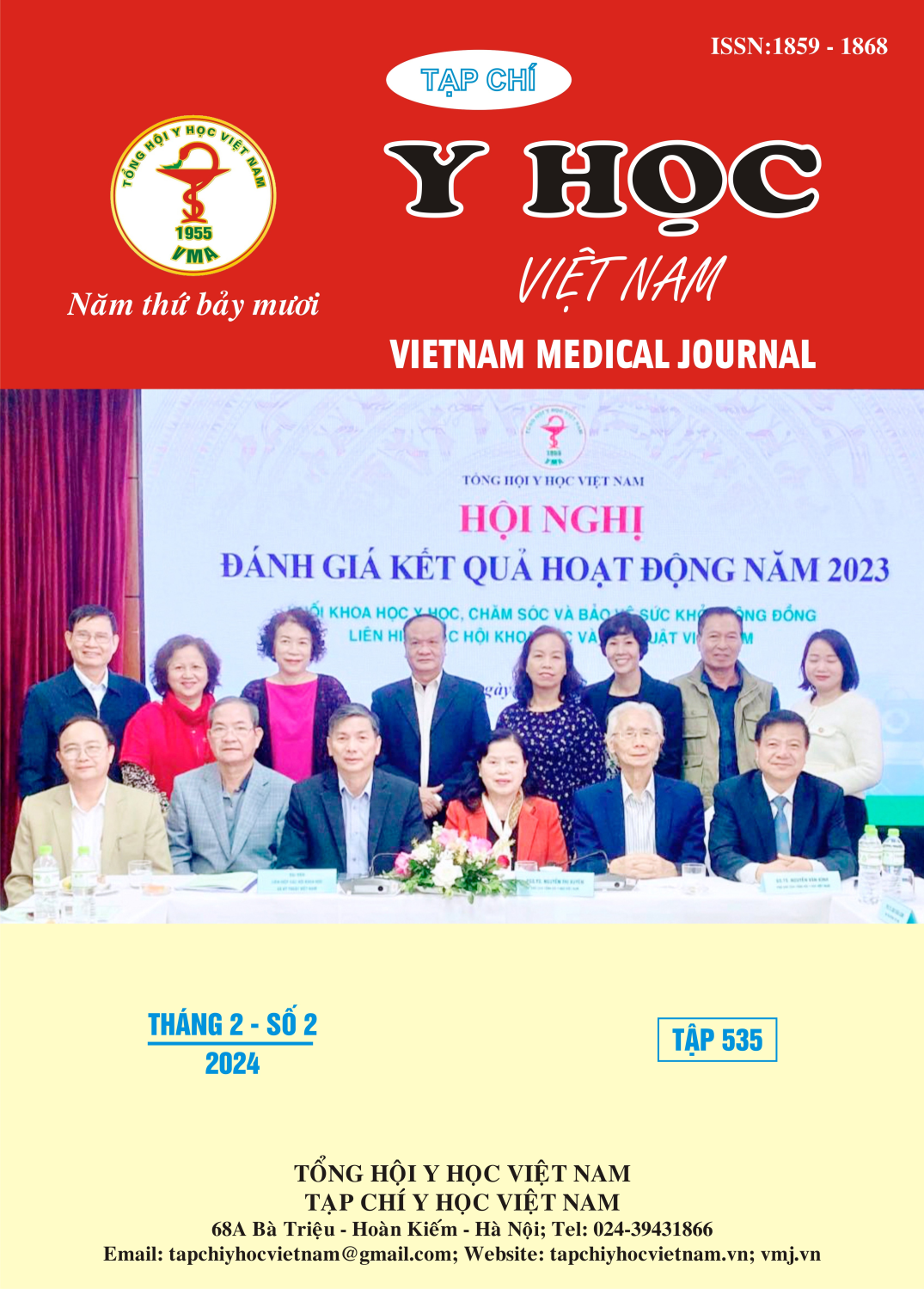HYBRID SURGERY COMPLEX LOWER-EXTREMITIES VASCULAR PROCEDURES
Main Article Content
Abstract
Background: The combination of surgery and endovascular intervention (Hybrid) in the treatment of vascular diseases is currently a common development trend in the world due to its outstanding advantages compared to intervention or surgery alone. The Cardiovascular Surgical Department of 108 Military Central Hospital performed its first Hybrid surgery in 2016. Since then, this method has given patients positive results. The research aim is to describe the case and test the results of applying Hybrid in the treatment of lower extremity vascular disease and the applicability and development of this technique. Methods: This is a retrospective, descriptive study, including but not limited to, studying 30 patients who came for medical examination and treatment at the 108 Military Central Hospital from 10/2019 to 04/2022. Results: Patients diagnosed with complex lower extremity diseases were male (90%), with an average age of 64.5 ± 16.1 years old; hypertension accounted for 70%; Diabetes accounted for 30%. Clinical characteristics of the patients: 90% of patients with stage IV anemia, 13.3% of patients with coronary artery disease; 26.6% of patients with occlusion of the main iliac artery, superficial femoral artery. Surgical procedures conducted for the patients: 50% endarterectomy, femoral artery junction reconstruction combined with stenting of the original iliac artery, angioplasty of the superficial femoral artery, popliteal artery, and 3 axes of the lower leg; 26.6% of patients had iliac artery stents combined with the popliteal femoral bridge by saphenous vein or artificial vessel; 10% endothelium, femoral artery junction reconstruction combined with angioplasty of the original iliac artery, superficial femoral artery, popliteal artery. After surgery, 100% of the procedures were successful in technique. Patients came for a follow-up examination, 83.3% of patients had no pain, 43.3% of patients walked 50m, 33.3% of patients healed ulcers, 10% had large amputations, and 6.7% of patients with small amputations. Conclusions: The combination of surgery and endovascular intervention (Hybrid) has opened up the right direction and outstanding advantages and very good early results for patients with multistage lesions of lower extremity artery diseases.
Article Details
Keywords
Hybrid; vascular intervention, Combined endovascular and surgical approach, Peripheral artery disease (PAD)
References
2. Rooke, T. W., Hirsch, A. T., Misra, S., Sidawy, A. N., Beckman, J. A., Findeiss, L. K.,... & Zierler, R. E. (2011). 2011 ACCF/AHA focused update of the guideline for the management of patients with peripheral artery disease (updating the 2005 guideline) a report of the American college of cardiology foundation/American heart association task force on practice guidelines. Journal of the American College of Cardiology, 58(19), 2020-2045.
3. Fowkes FG, Housley E, Riemersma RA, et al (1992). Smoking, lipids, glucose intolerance, and blood pressure as risk factors for peripheral atherosclerosis compared with ischemic heart disease in the Edinburgh Artery Study. Am J Epidemiol, 135, 331-40
4. Antoniou GA, Sfyroeras GS, C.Karathanos. Hybrid endovascular and open treatment of severe multilevel lower extremity arterial disease. Eur J Vasc Endovasc Surg 2009; 38:616-622.
5. Nguyễn Duy Thắng và Đoàn Quốc Hưng (2016). Kết quả điều trị bệnh động mạch chi dưới bằng phẫu thuật phối hợp với can thiệp mạch máu một thì (Hybrid) tại bệnh viện hữu nghị Việt Đức giai đoạn 2014-2015. Tạp chí Phẫu thuật tim mạch và lồng ngực Việt Nam, số 15, tháng 11/2016.
6. Norgren L, Hiatt WR, Dormandy JA, Nehler MR, Harris KA, Fowkes FG; TASC II Working Group. Inter-Society Consensus for the Management of Peripheral Arterial Disease (TASC II). TASC II: J.Vasc. Surgery: 2007:45:S1-S68
7. P.-S. Aho, M. Venermo. Hybrid procedures as a novel technique In the treatment of critical limb ischemia. Scandinavian Journal of Surgery 101: 107–113, 2012
8. Áp dụng kỹ thuật Hybrid trong điều trị bệnh lý mạch máu phức tạp (2017). Truy cập tại: https://www.fvhospital.com/tin-suc-khoe/ap-dung-ky-thuat-hybrid-trong-dieu-tri-benh-ly-mach-mau-phuc-tap/


